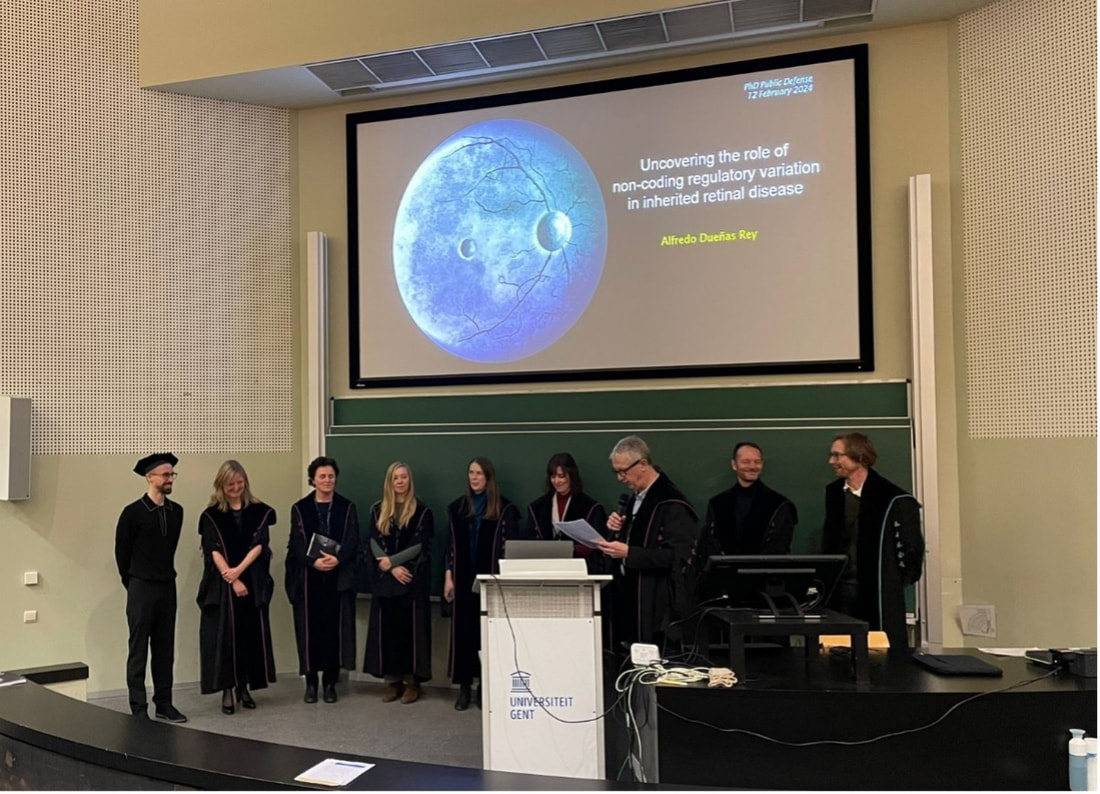ESR7: Identification and characterisation of structural variants and non-coding sequence variants of ABCA4
|
|
Alfredo Dueñas Rey
Originally from a small town in central Spain, eager for new experiences, I decided to take a new direction and moved to Sweden. I obtained my bachelor’s degree in Biomedicine at Karolinska Institutet and after three years living in Stockholm I moved again, this time down south, to study a master’s program in Molecular Genetics at Lund University. During my previous internships, I have been exposed to many different disciplines, although the common thread to all has been understanding the contribution of genetic variation to human diseases. I have a particular interest in structural variation and the vast non-coding territory of the genome, which are aspects that I will be addressing during my PhD project. Being part of the StarT network as an ESR Fellow is an immense opportunity for me, from which I hope to obtain more research skills and a wider scientific perspective that surely will be invaluable for my future career. On February 12, 2024 I received my PhD degree in Health Sciences. It has been an immense privilege to be part of the StarT consortium. Not only have I gained the research skills and wider scientific perspective I hoped for before embarking on this adventure but also I have had the chance to meet so many inspiring and enthusiastic fellows/friends that made this journey easier. I am currently working as a Clinical Scientist in the Genetic Data Analysis department of CENTOGENE, a leading company in the field of genetic diagnostics for rare diseases. |
Abstract
Targeted Locus Amplification (TLA) is based on the physical proximity of nucleotides within a locus of interest and requires just one primer pair complementary to a short locus-specific sequence to amplify 10.000s of basepairs of surrounding sequence information. TLA-based sequencing results in complete sequence information and enables haplotyping, which drastically reduces the filtering of candidate variants in genomic regions. ESR7 will design TLA for the entire ABCA4 gene as a detection tool both for SNVs and SVs in 50 monoallelic STGD1 cases. In addition, TLA will be used for the characterisation of 6 SVs previously found by us in monoallelic STGD1 cases. Second, ESR7 will develop an improved HaloPlex design for cost-effective resequencing of the ABCA4 locus in 300 mono-allelic European STGD1 cases. Both TLA and HaloPlex sequence data generated by ESR7 will be integrated with the smMIPs and long-read data from ESR5 and ESR6. We and P2-RUMC previously identified 10 putative cis-regulatory variants in mono-allelic STGD1 cases. Third, ESR7 will assess the effects of previously and newly identified non-coding variants by ex vivo massively parallel reporter assays (CRE-seq) optimised by ESR3.
Targeted Locus Amplification (TLA) is based on the physical proximity of nucleotides within a locus of interest and requires just one primer pair complementary to a short locus-specific sequence to amplify 10.000s of basepairs of surrounding sequence information. TLA-based sequencing results in complete sequence information and enables haplotyping, which drastically reduces the filtering of candidate variants in genomic regions. ESR7 will design TLA for the entire ABCA4 gene as a detection tool both for SNVs and SVs in 50 monoallelic STGD1 cases. In addition, TLA will be used for the characterisation of 6 SVs previously found by us in monoallelic STGD1 cases. Second, ESR7 will develop an improved HaloPlex design for cost-effective resequencing of the ABCA4 locus in 300 mono-allelic European STGD1 cases. Both TLA and HaloPlex sequence data generated by ESR7 will be integrated with the smMIPs and long-read data from ESR5 and ESR6. We and P2-RUMC previously identified 10 putative cis-regulatory variants in mono-allelic STGD1 cases. Third, ESR7 will assess the effects of previously and newly identified non-coding variants by ex vivo massively parallel reporter assays (CRE-seq) optimised by ESR3.




